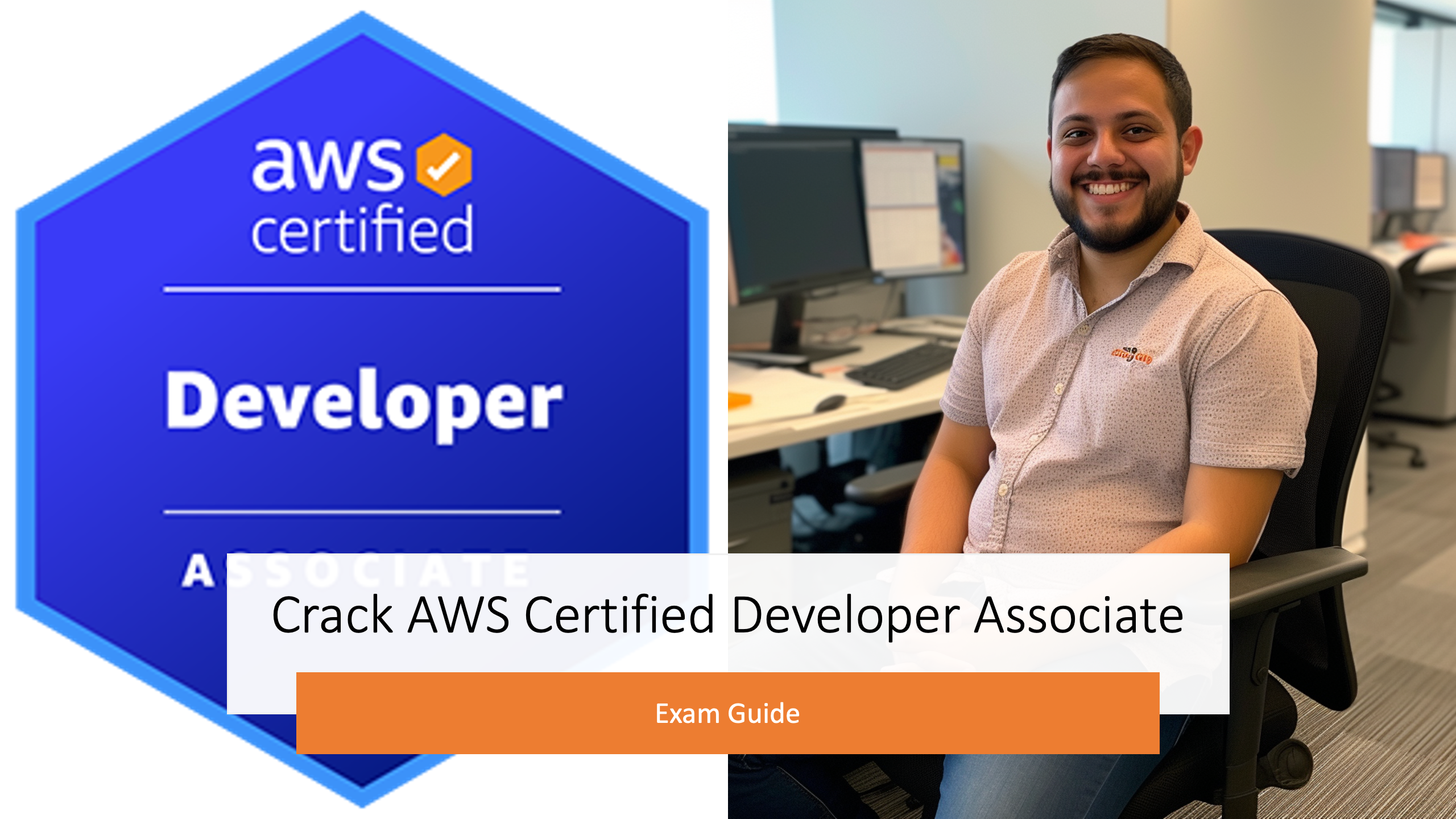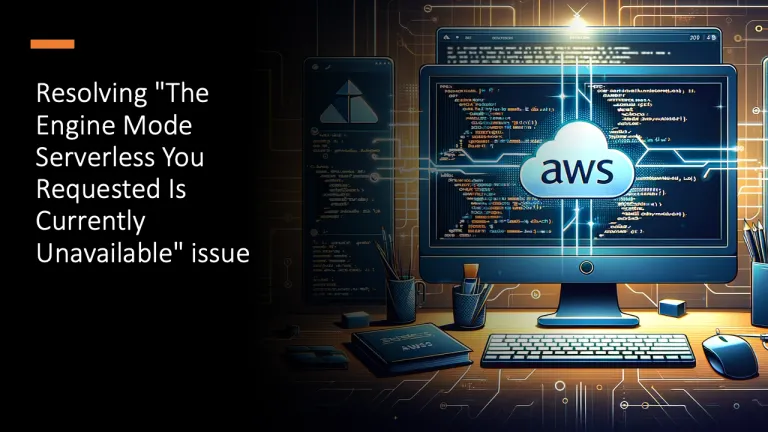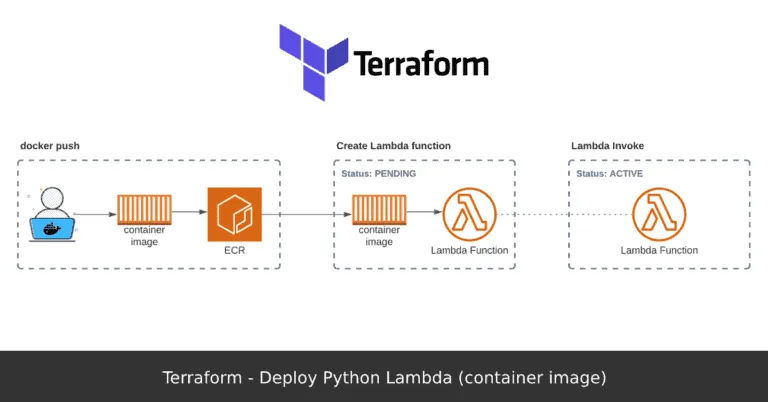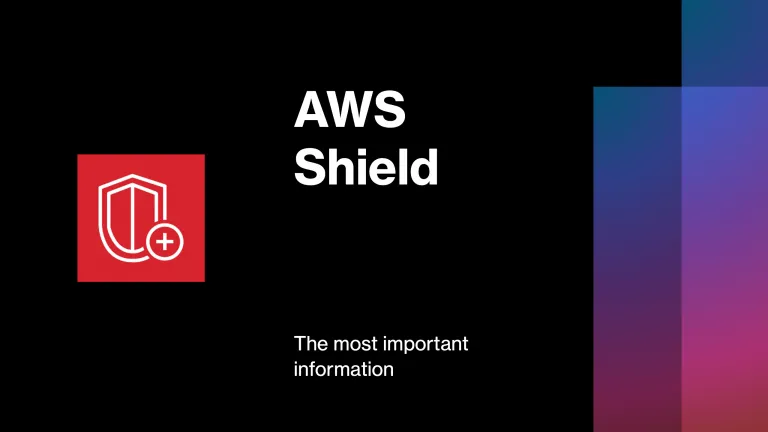Crack AWS Certified Developer Associate Exam Guide
Introduction
The AWS Certified Developer-Associate exam is designed for individuals who perform a development role and have hands-on experience developing and maintaining AWS-based applications. This certification validates your understanding of core AWS services, uses, and basic AWS architecture best practices and your proficiency in developing, deploying, and debugging cloud-based applications using AWS.
Key Exam Details
- Exam Type: Multiple-choice questions (MCQs) and multiple-response questions
- Number of Questions: 65 questions
- Duration: 130 minutes
- Passing Score: 720 out of 1000 points
- Exam Cost: 150 USD
Exam Domains
The AWS Certified Developer – Associate exam covers the following domains:
- Development with AWS Services (32%)
- Security (26%)
- Deployment (24%)
- Troubleshooting and Optimization (18%)
By preparing for and passing this exam, you can demonstrate your expertise in developing, testing, deploying, and debugging AWS cloud-based applications and your ability to complete various tasks related to AWS services.
AWS Developer Certification: Why It Matters
As an IT professional, the significance of an AWS Developer Certification should not be underestimated. With the exponential growth of cloud computing, the demand for AWS-certified professionals has skyrocketed. But why exactly does this certification matter?
Here are four main reasons:
- Increased Job Opportunities: AWS one of the major cloud providers with a massive market share. Companies, therefore, are actively seeking certified AWS professionals who can effectively utilize AWS services. The AWS Developer Certification opens doors to a wide range of job roles.
- Proof of Skills: Earning an AWS Developer Certification isn’t a walk in the park. It involves rigorous preparation and demonstration of in-depth knowledge of AWS services. Thus, the certification acts as a testament to your skills and understanding, validating your expertise in the eyes of employers.
- Higher Salary: AWS Certified Developers often command higher salaries than non-certified peers. According to the 2022 IT Skills and Salary Report, AWS Certified Developers earn an average salary of $130,000 annually.
- Continuous Learning: The field of cloud computing is dynamic, with new services and features constantly being introduced. Being an AWS Certified Developer necessitates continuous learning to maintain your certification. This drives you to stay updated with AWS’s latest trends and technologies.
In conclusion, the AWS Developer Certification is an emblem of your hard-earned skills and a stepping stone to greater heights in your career.
Mastering AWS Fundamentals for the Exam
While the AWS Certified Developer exam is challenging, a firm grasp of AWS fundamentals is critical for success. This section aims to highlight the essential areas of AWS you need to master for the exam.
Here’s what you need to focus on:
- Understanding AWS Global Infrastructure: AWS Global Infrastructure comprises Regions, Availability Zones, and Edge Locations. It’s crucial to understand their roles and how they interact. Questions on this topic often appear in the exam.
- Hands-on with AWS Management Console: Familiarize yourself with the AWS Management Console, as it’s the primary interface for managing and accessing AWS services. Practical experience using the console is a must.
- Core Services:
- Amazon S3: Know how to create buckets, upload files, implement S3 lifecycle policies, and secure data with S3 bucket policies.
- EC2 Instances: Understand the various EC2 instance types, how to launch instances, security groups, and how to connect Elastic IP with instances.
- DynamoDB: You should be comfortable creating tables, understanding primary keys, secondary indexes, and how to query data.
- Security and Identity Services:
- IAM (Identity and Access Management): Get acquainted with creating users, groups, and roles and understand IAM policies.
- Amazon Cognito: Be aware of the user pool and identity pool and how it helps manage user identities.
- Developer Tools:
- AWS CLI: Understand how to configure and use AWS CLI for scripting.
- AWS SDKs: Familiarize yourself with AWS SDKs and how to use them in your application development.
- AWS Architecture Best Practices: Comprehend the AWS Well-Architected Framework and its five pillars:
- Operational Excellence
- Security
- Reliability
- Performance Efficiency
- Cost Optimization
Remember, the AWS Certified Developer exam isn’t just about theoretical knowledge—it’s about applying these concepts to solve real-world scenarios. So make sure to gain hands-on experience with AWS services. In the next section, we’ll dive deeper into more advanced AWS services that the exam covers. Stay tuned!
AWS Core Services Overview
This section will provide an overview of the core AWS services essential for AWS Certified Developer candidates to understand.
EC2
Amazon Elastic Compute Cloud (EC2) is a web service that provides scalable computing capacity in the AWS Cloud. EC2 lets you launch virtual servers, configure security and networking, and manage storage. Key features include:
- Virtual computing environments, known as instances
- Preconfigured templates for EC2 instances, called Amazon Machine Images (AMIs)
- Various configurations of CPU, memory, storage, and networking capacity
S3
Amazon Simple Storage Service (S3) is an object storage service that offers industry-leading scalability, data availability, security, and performance. S3 enables users to store and retrieve any amount of data for various use cases, such as data lakes, websites, and mobile applications. Key features include:
- Storage classes designed for different use cases
- Easy management features to organize and configure access to data
Lambda
AWS Lambda is a serverless compute service that lets you run code without provisioning or managing servers. Lambda automatically runs your code in response to events and scales your functions as needed. Key features include:
- High-availability compute infrastructure
- Support for multiple language runtimes
- Automatic scaling and administration of compute resources
DynamoDB
Amazon DynamoDB is a fully managed NoSQL database service that provides fast and predictable performance with seamless scalability. DynamoDB allows you to create database tables that can store and retrieve any amount of data and serve any level of request traffic. Key features include:
- NoSQL key-value and document database
- Fully managed, multi-Region, and multi-active support
- Built-in security, backup, and restore options
Elastic Beanstalk
AWS Elastic Beanstalk is an easy-to-use service for deploying and scaling web applications and services[5]. With Elastic Beanstalk, you can quickly deploy and manage applications in the AWS Cloud without learning about the infrastructure that runs those applications. Key features include:
- Support for multiple programming languages
- Automatic handling of capacity provisioning, load balancing, scaling, and application health monitoring
- Full control of AWS resources powering your applications
API Gateway
Amazon API Gateway is a fully managed service that makes it easy for developers to create, publish, maintain, monitor, and secure APIs at any scale. API Gateway allows you to define RESTful APIs and WebSocket APIs and acts as a “front door” for applications to access data, business logic, or functionality from your backend services. Key features include:
- Support for multiple backend services, such as AWS Lambda, EC2, or any publicly accessible web service
- Custom domain names and SSL certificates
- Caching, logging, security, and monitoring features
Deployment Strategies and Best Practices
This section will discuss various deployment strategies and best practices for AWS Certified Developer candidates to understand.
CI/CD Pipeline
The Continuous Integration and Continuous Delivery (CI/CD) Pipeline is an automated process that allows you to build, test, and deploy your code changes efficiently. Key components of a CI/CD pipeline include:
- Source control (e.g., AWS CodeCommit, GitHub)
- Build and test (e.g., AWS CodeBuild)
- Deployment (e.g., AWS CodeDeploy, AWS Elastic Beanstalk)
- Orchestration (e.g., AWS CodePipeline)
Elastic Beanstalk
AWS Elastic Beanstalk simplifies the deployment and scaling of web applications and services. It supports various programming languages and automatically handles capacity provisioning, load balancing, scaling, and application health monitoring. Key deployment features include:
- Deployment policies and settings
- Rolling updates and deployments
- Blue/green deployments
CloudFormation
AWS CloudFormation is a service that enables you to provision and manage AWS resources using custom templates in YAML or JSON format. CloudFormation allows you to define your infrastructure as code and automate the deployment process. Key features include:
- Granular control over provisioning and management of AWS resources
- Integration with other AWS deployment services or third-party tools
- Extensions such as AWS Cloud Development Kit (CDK) and AWS Serverless Application Model (SAM)
AWS SAM
AWS Serverless Application Model (SAM) is an open-source framework for building serverless applications. It extends AWS CloudFormation and provides a shorthand syntax to express serverless resources such as Lambda functions, API Gateway, and DynamoDB tables. Key features include:
- The simple and clean syntax for defining serverless applications
- Local testing and debugging with the AWS SAM CLI
- Automatic transformation and expansion of SAM syntax into AWS CloudFormation during deployment
Serverless Architecture
This section will discuss the key components of serverless architecture and their importance for AWS Certified Developer candidates.
AWS Lambda
AWS Lambda is a serverless compute service that allows you to run your code without provisioning or managing servers. It automatically scales your applications in response to events and only charges you for the compute time you consume. Key features include:
- Support for multiple programming languages (e.g., Python, Node.js, Java)
- Event-driven architecture with various AWS services as event sources
- Integration with other AWS services, such as API Gateway and Step Functions
API Gateway
Amazon API Gateway is a fully managed service that enables developers to create, publish, maintain, monitor, and secure APIs at any scale. It acts as a “front door” for applications to access data, business logic, or functionality from your backend services. Key features include:
- Support for RESTful APIs and WebSocket APIs
- Custom domain names, SSL certificates, and caching capabilities
- Integration with AWS Lambda for serverless backend processing
Step Functions
AWS Step Functions is a serverless workflow service that allows you to coordinate distributed applications and microservices using visual workflows. It enables you to build, run, and visualize complex, multi-step processes that involve multiple AWS services. Key features include:
- State machine-based workflows with a JSON-based language (Amazon States Language)
- Integration with various AWS services, such as Lambda, DynamoDB, and SNS
- Error handling, retry policies, and parallel execution capabilities
Security and Compliance
This section will discuss key security and compliance services essential for AWS Certified Developer candidates to understand.
IAM
AWS Identity and Access Management (IAM) is a web service that helps you securely control access to AWS resources. With IAM, you can centrally manage permissions that control which AWS resources users can access. Key features include:
- User and group management
- Role-based access control (RBAC)
- Fine-grained permissions and attribute-based access control (ABAC)
KMS
AWS Key Management Service (KMS) is a managed service that makes creating and controlling cryptographic keys to protect your data easy. KMS uses hardware security modules (HSM) to protect and validate your AWS KMS keys under the FIPS 140-2 Cryptographic Module Validation Program. Key features include:
- Centralized control over the lifecycle and permissions of your keys
- Integration with most other AWS services
- Support for encryption, decryption, and digital signature operations
Cognito
Amazon Cognito provides authentication, authorization, and user management for your web and mobile apps. Cognito enables users to sign in directly with a username and password or through a third party such as Facebook, Amazon, Google, or Apple. Key components include:
- User pools: User directories that provide sign-up and sign-in options for your app users
- Identity pools: Enable you to grant your users access to other AWS services
- Integration with external identity providers that support SAML or OpenID Connect
Database Services
In this section, we will discuss key database services that are essential for AWS Certified Developer candidates to understand.
DynamoDB
Amazon DynamoDB is a fully managed NoSQL database service that provides fast and predictable performance with seamless scalability. DynamoDB supports key-value and document data models, allowing you to create database tables that can store and retrieve any data and serve any level of request traffic. Key features include:
- NoSQL key-value and document database
- Fully managed, multi-Region, and multi-active support
- Built-in security, backup, and restore options
RDS
Amazon Relational Database Service (RDS) is a managed relational database service that provides several familiar database engines, including Amazon Aurora, MySQL, MariaDB, PostgreSQL, Oracle, and Microsoft SQL Server. RDS handles routine database tasks such as provisioning, patching, backup, recovery, failure detection, and repair. Key features include:
- Support for multiple database engines
- Automated backups, read replicas, and snapshots
- Integration with AWS Identity and Access Management (IAM) and Amazon Key Management Service (KMS) for security
ElastiCache
Amazon ElastiCache is a fully managed in-memory caching service that allows you to easily deploy, operate, and scale popular open-source cache engines like Redis and Memcached on the cloud without worrying about managing infrastructure. ElastiCache helps improve application performance, reduce latency, and increase throughput by offloading data processing tasks from your primary databases. Key features include:
- Support for two caching engines: Redis and Memcached
- High availability through replication and automatic failover
- Scalability through online sharding
Application Integration
This section will discuss key application integration services essential for AWS Certified Developer candidates to understand.
SNS
Amazon Simple Notification Service (SNS) is a fully managed messaging service that enables you to send messages to multiple subscribers through various protocols, such as email, SMS, and Lambda functions. SNS supports publish/subscribe (pub/sub) and point-to-point messaging patterns. Key features include:
- Topic-based publish/subscribe messaging
- Support for multiple protocols and endpoints
- Integration with other AWS services, such as Lambda and SQS
SQS
Amazon Simple Queue Service (SQS) is a fully managed message queuing service that enables you to decouple and scale microservices, distributed systems, and serverless applications. SQS offers two types of message queues: standard queues and FIFO (First-In-First-Out) queues. Key features include:
- At-least-once message delivery for standard queues
- Exactly-once message processing for FIFO queues
- Integration with other AWS services, such as Lambda and SNS
EventBridge
Amazon EventBridge is a serverless event bus service that makes it easy to connect applications using data from various sources, such as AWS services, SaaS applications, and custom applications. EventBridge simplifies building event-driven architectures by allowing you to route events from one application to another without writing custom code. Key features include:
- Support for AWS services, SaaS applications, and custom event sources
- Schema registry for event discovery and code generation
- Integration with AWS Lambda, Step Functions, and other AWS services for event processing
Monitoring and Logging
This section will discuss key monitoring and logging services essential for AWS Certified Developer candidates to understand.
CloudWatch
Amazon CloudWatch is a monitoring and management service that provides data and actionable insights for AWS, on-premises, hybrid, and other cloud applications and infrastructure resources. CloudWatch enables you to collect and access all your performance and operational data through logs and metrics from a single platform. Key features include:
- Metrics: Collect and track various performance and operational data
- Logs: Collect and store logs from your resources, applications, and services in near real-time
- Alarms: Set alarms for your metric data to help you troubleshoot, spot trends, and take automated actions
- Events: Monitor and respond to changes in your AWS environment
AWS X-Ray
AWS X-Ray is a service that helps developers analyze and debug production and distributed applications with end-to-end tracing capabilities. X-Ray provides an end-to-end view of requests as they travel through your application and shows a map of your application’s underlying components. Key features include:
- Simple setup: Easy integration with your application and installation of the X-Ray agent
- End-to-end tracing: Monitor application traces, including the performance of calls to downstream components or services
- Service map: Visualize your application’s architecture, including connections to components and dependency trees
- Server and client-side latency detection: Identify bottlenecks and determine where high latencies are occurring
Performance Optimization
This section will discuss key performance optimization services essential for AWS Certified Developer candidates to understand.
Auto Scaling
AWS Auto Scaling is a service that automatically adjusts the capacity of your resources to maintain steady, predictable performance at the lowest possible cost. Auto Scaling helps you ensure that you have the correct number of Amazon EC2 instances available to handle the load for your application. Key features include:
- Automatically scale in and out based on user-defined policies, health status checks, and schedules
- Support for multiple AWS resources, such as EC2 instances, ECS tasks, DynamoDB tables, and Aurora Replicas
- Integration with Amazon CloudWatch for monitoring and triggering scaling actions
Elastic Load Balancing
Elastic Load Balancing (ELB) automatically distributes incoming application traffic across multiple targets in one or more Availability Zones, such as EC2 instances, containers, and IP addresses. ELB helps improve application performance, reduce latency, and increase throughput by offloading data processing tasks from your primary databases. Key features include:
- Support for multiple load balancer types, such as Application Load Balancers, Network Load Balancers, and Classic Load Balancers
- Health checks to monitor the health of registered targets and route traffic only to healthy targets
- Automatic scaling of load balancer capacity in response to changes in incoming traffic
Exam Preparation Tips and Resources
This section will discuss key tips and resources to help you prepare for the AWS Certified Developer – Associate exam. AWS Certified Developer Associate study materials include the following:
Official AWS Resources
AWS provides various official resources to help you prepare for the exam:
- AWS Training and Certification: AWS offers a comprehensive learning path, including free online training, classroom training, and hands-on labs to help you gain the necessary skills and knowledge.
- AWS Training portal: AWS offers a free set of training programs and offerings built by the experts at AWS
- AWS Whitepapers: Review the official AWS whitepapers and FAQs related to the exam domains to deepen your understanding of AWS services and best practices.
- AWS Well-Architected Framework: Familiarize yourself with the AWS Well-Architected Framework, which provides a consistent approach to evaluating architectures and implementing designs that scale over time.
Practice Exams
Taking practice exams is an essential part of your exam preparation. They help you assess your knowledge, identify areas for improvement, and familiarize yourself with the exam format. Some popular practice exam providers include:
- AWS Official Practice Exam: AWS offers an official practice exam that closely resembles the actual exam regarding question format and difficulty.
- Whizlabs: Whizlabs provides practice exams and online courses for various AWS certifications, including the AWS Certified Developer – Associate exam.
- Udemy: Udemy offers a wide range of practice exams and courses created by industry experts to help you prepare for the AWS Certified Developer – Associate exam:
Study Guides
Study guides can help you consolidate your knowledge and provide a structured approach to exam preparation. Some popular study guides for the AWS Certified Developer – Associate exam include:
- AWS Certified Developer – Associate All-in-One Exam Guide: This comprehensive study guide covers all exam domains and includes practice questions, quizzes, and exercises to reinforce your learning.
- Amazon Books: Amazon offers a variety of books and eBooks related to AWS Certified Developer – Associate exam preparation, written by industry experts and experienced professionals.
By leveraging these resources and following a structured study plan, you can effectively prepare for the AWS Certified Developer – Associate exam and demonstrate your expertise in developing, testing, deploying, and debugging AWS cloud-based applications.
Proven Strategies for Exam Success
Successful exam preparation requires more than just understanding the content. It’s also about having the right strategies and resources at your disposal. Below are some proven strategies to help you excel in your AWS Certified Developer exam.
Time Management Tips
Efficient use of time is crucial when preparing for and taking the exam. Here are some tips:
- Pace Yourself: With 130 minutes to answer approximately 65 questions. You should spend around 2 minutes on each. If a question takes too long to answer, flag it for review and move on.
- Practice with Timed Exams: Use practice exams to get a feel for the timing of the real exam. This helps you become comfortable with the pace you need to maintain.
- Review Strategy: Allocate the last 10-15 minutes of your exam time for reviewing flagged questions. Don’t spend too much time on a single question during the review.
Efficient Study Techniques
Effective study techniques can dramatically improve your understanding and retention of information. Here are some to consider:
- Hands-on Practice: AWS emphasizes practical understanding. Make sure to spend significant time getting hands-on experience with AWS services.
- Study in Chunks: Break your study sessions into manageable chunks. This technique, known as spaced repetition, helps improve memory retention.
- Use Flashcards: For key concepts and facts, use flashcards for quick revision and reinforcement.
- Peer Learning: If possible, study with a group. Explaining concepts to others is a great way to solidify your understanding.
FAQ
What is an AWS Certified Developer Exam?
Is AWS Certified Developer Certificate worth IT?
Is AWS developer certification hard?
What does an AWS Certified developer Associate do?
How difficult is the AWS Certified Developer Associate exam?
Is the AWS Developer Associate harder than the Solutions Architect Associate exam?
Conclusion and Next Steps
This blog post has covered essential topics and services for the AWS Certified Developer – Associate exam, including core AWS services, deployment strategies, serverless architecture, security and compliance, database services, application integration, monitoring and logging, and performance optimization.
As you prepare for the exam, consider the following next steps:
- Create a study plan: Set a timeline for your exam preparation, allocate time for each topic, and schedule regular review sessions to reinforce your learning.
- Hands-on practice: Gain hands-on experience with AWS services through free-tier usage, labs, and tutorials. Practical experience is crucial for understanding and applying concepts in real-world scenarios.
- Join a study group or community: Connect with other AWS Certified Developer candidates through online forums, study groups, or local meetups. Sharing knowledge and experiences can help you stay motivated and learn from others’ insights.
- Review and revise the topics covered in this blog post and other resources to ensure you understand the exam domains.
- Schedule your exam: Once you feel confident in your knowledge and skills, schedule your AWS Certified Developer – Associate exam through the AWS Training and Certification portal.
By following these steps and leveraging the resources mentioned in this blog post, you will be well-prepared to tackle the AWS Certified Developer – Associate exam and demonstrate your expertise in developing, testing, deploying, and debugging AWS cloud-based applications. Good luck on your certification journey!
References
Please consult the following resources for further reading and in-depth exploration of topics covered in this guide. These will provide comprehensive information to support your AWS Certified Developer exam preparation:
- Official AWS Certified Developer – Associate Exam Guide: This is the official exam guide provided by AWS, outlining all the knowledge areas tested.
- AWS Well-Architected Framework Whitepaper: This document explains the five pillars of a well-architected framework.
- AWS Global Infrastructure: This page provides information about AWS’s global infrastructure, including regions, availability zones, and edge locations.
- AWS Security Best Practices: These materials present security best practices that will enhance the security of your AWS resources.
- AWS SDKs: Detailed documentation about AWS SDKs for different programming languages can be found on this page.
- AWS CLI User Guide: This user guide provides complete information about how to install, update, configure, and use the AWS CLI.
- AWS Developer Tools: Detailed documentation about AWS Developer Tools like AWS CodeStar, AWS CodeCommit, AWS CodeBuild, AWS CodeDeploy, and AWS CodePipeline.
- A Cloud Guru: A comprehensive learning platform offering courses tailored for AWS certifications.
- AWS Workshops: A hands-on learning environment for practical AWS skills.
Remember, these references are crucial assets in your preparation for the AWS Certified Developer exam. Make the best use of them and stay consistent with your studies. All the best with your practice and the exam!







